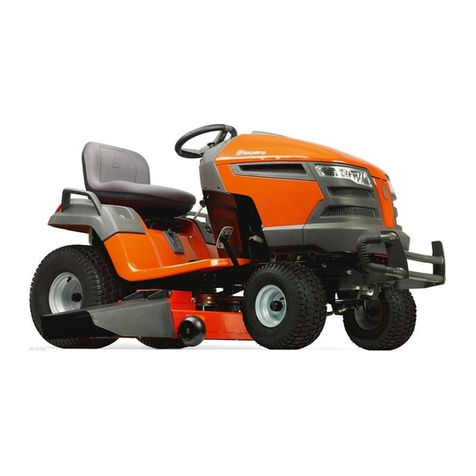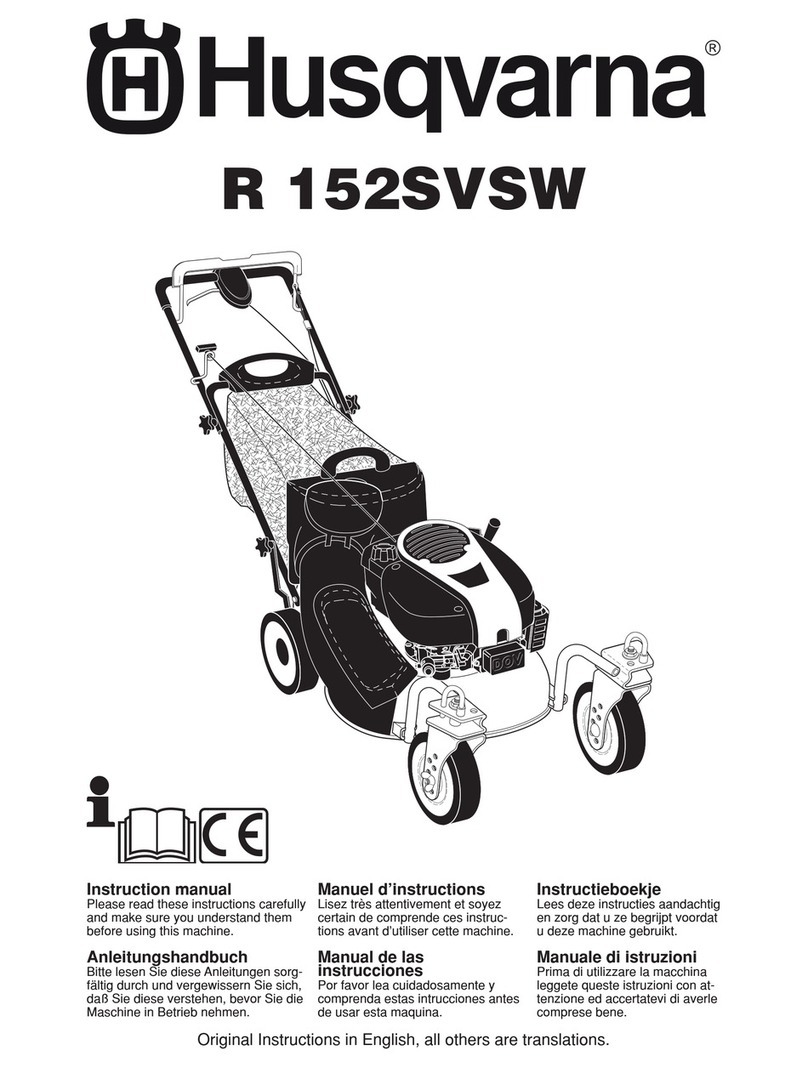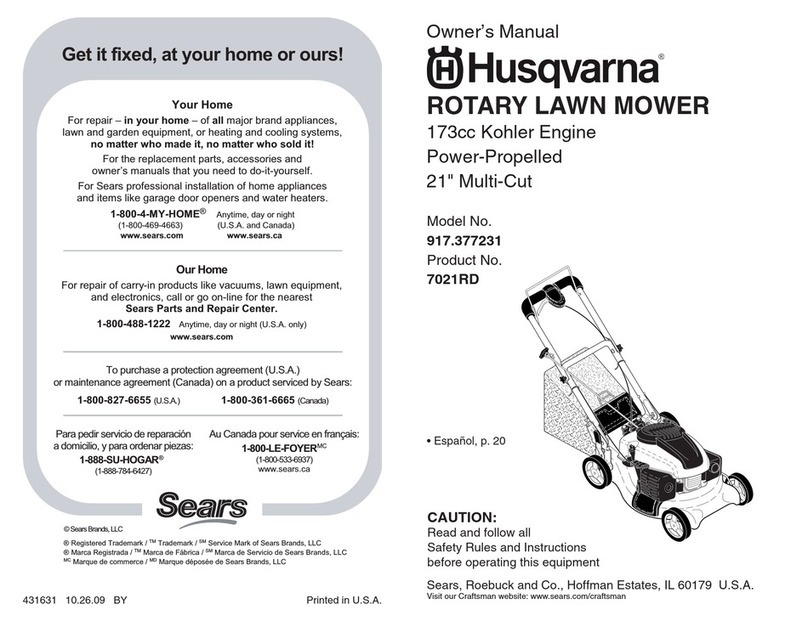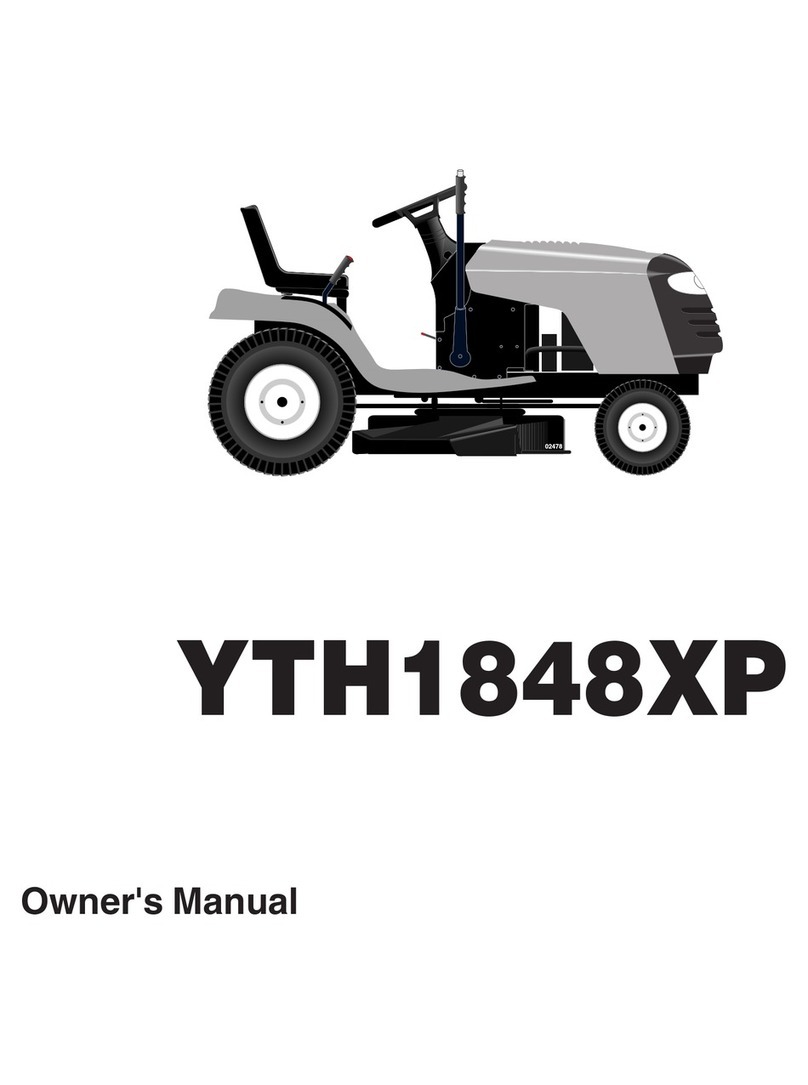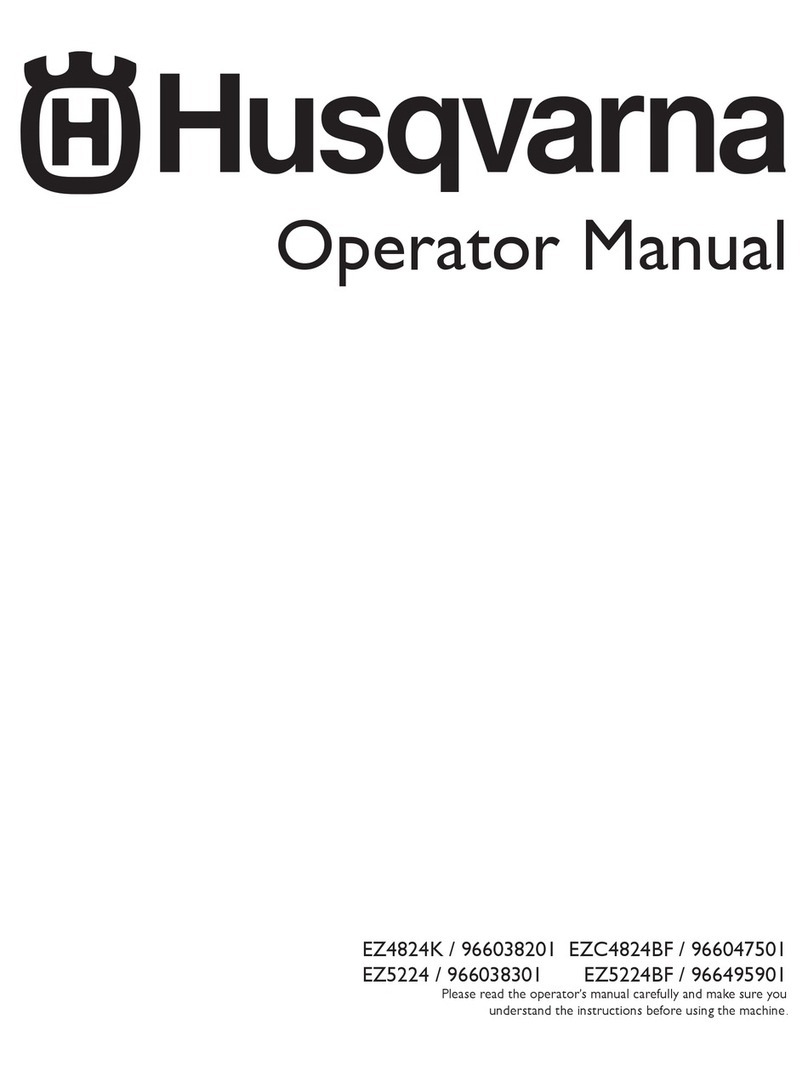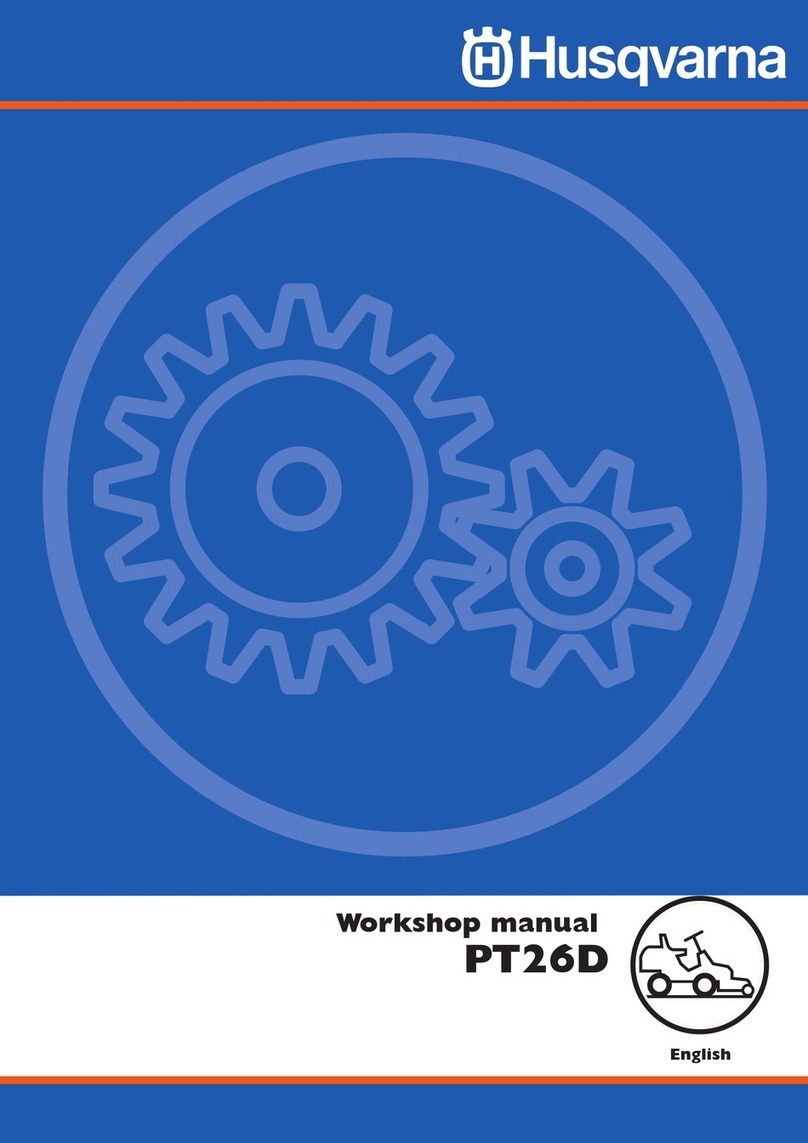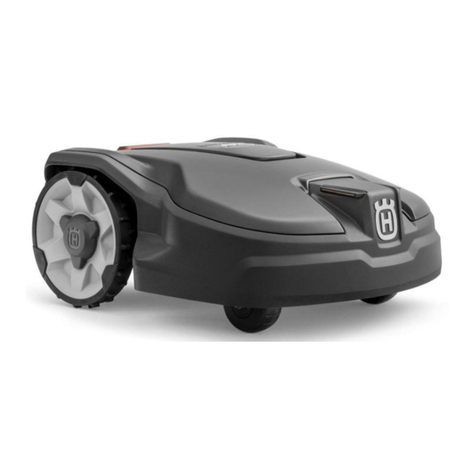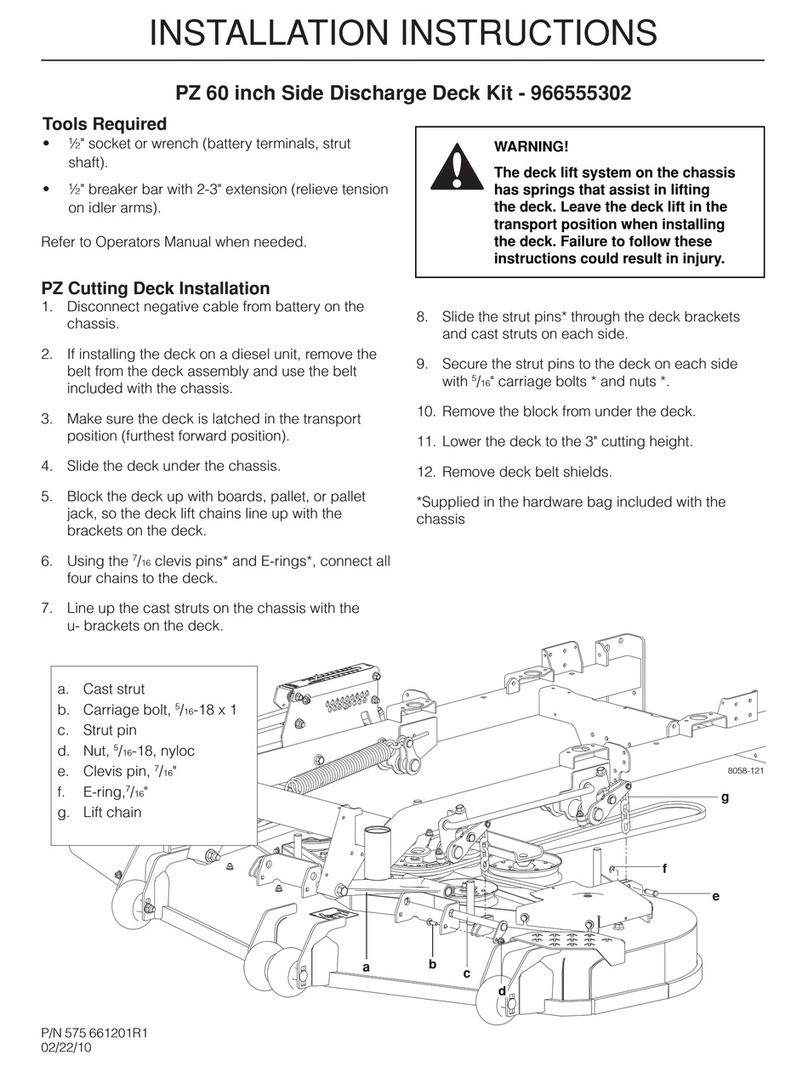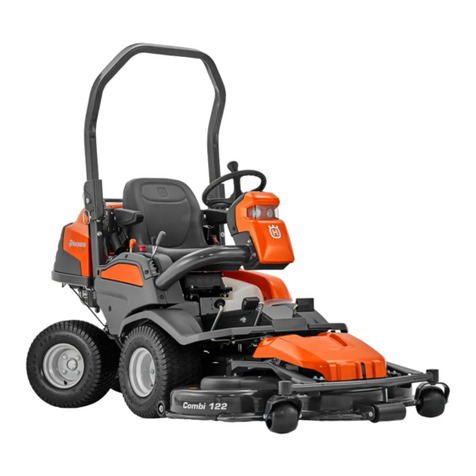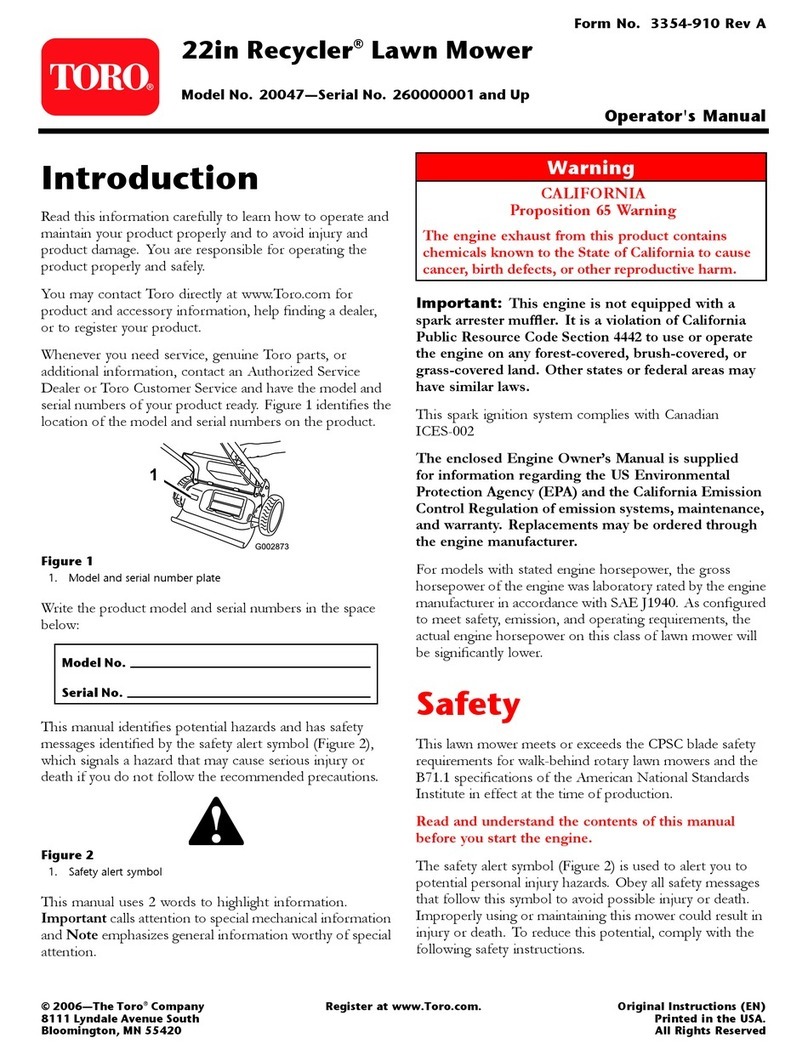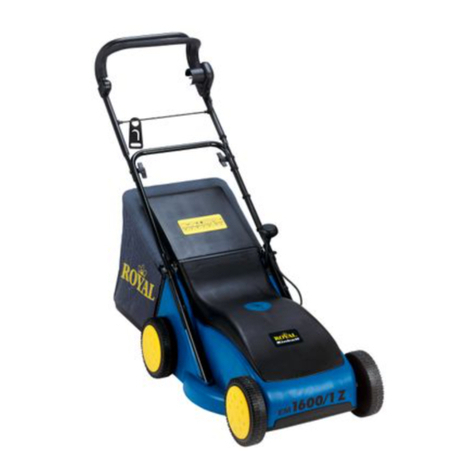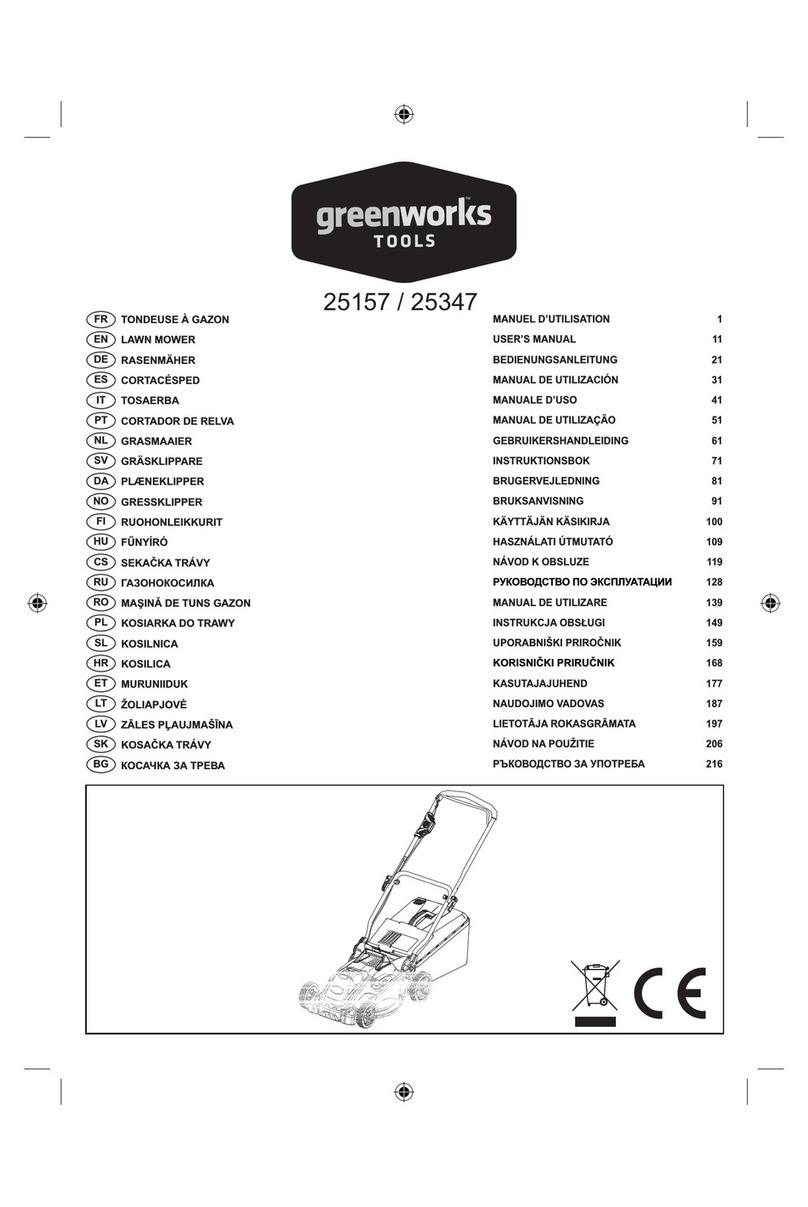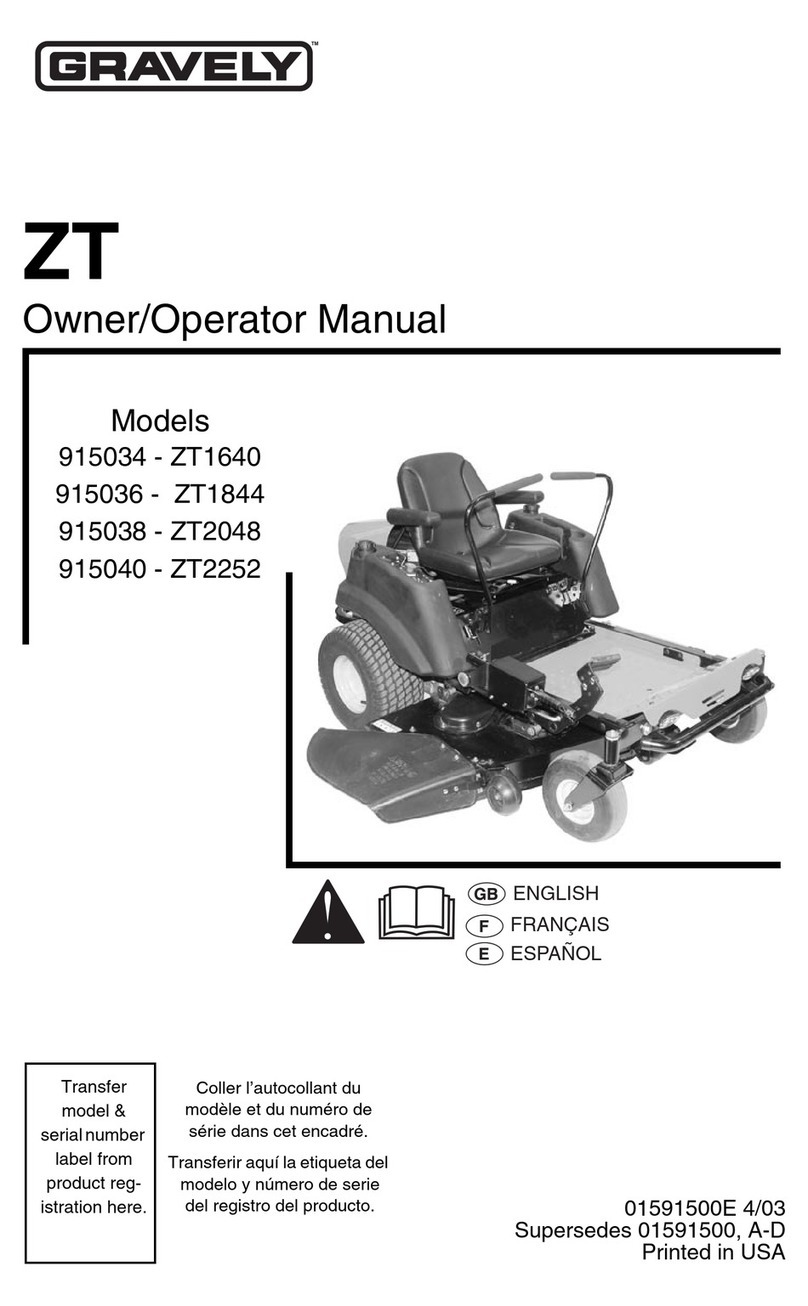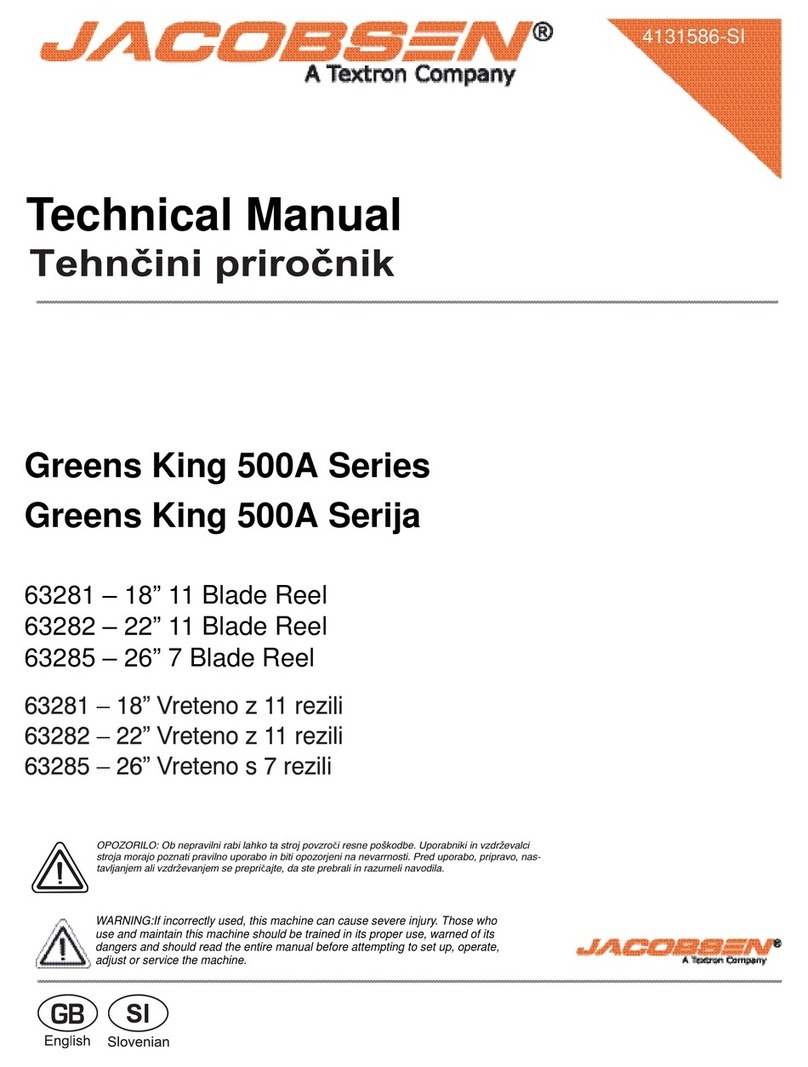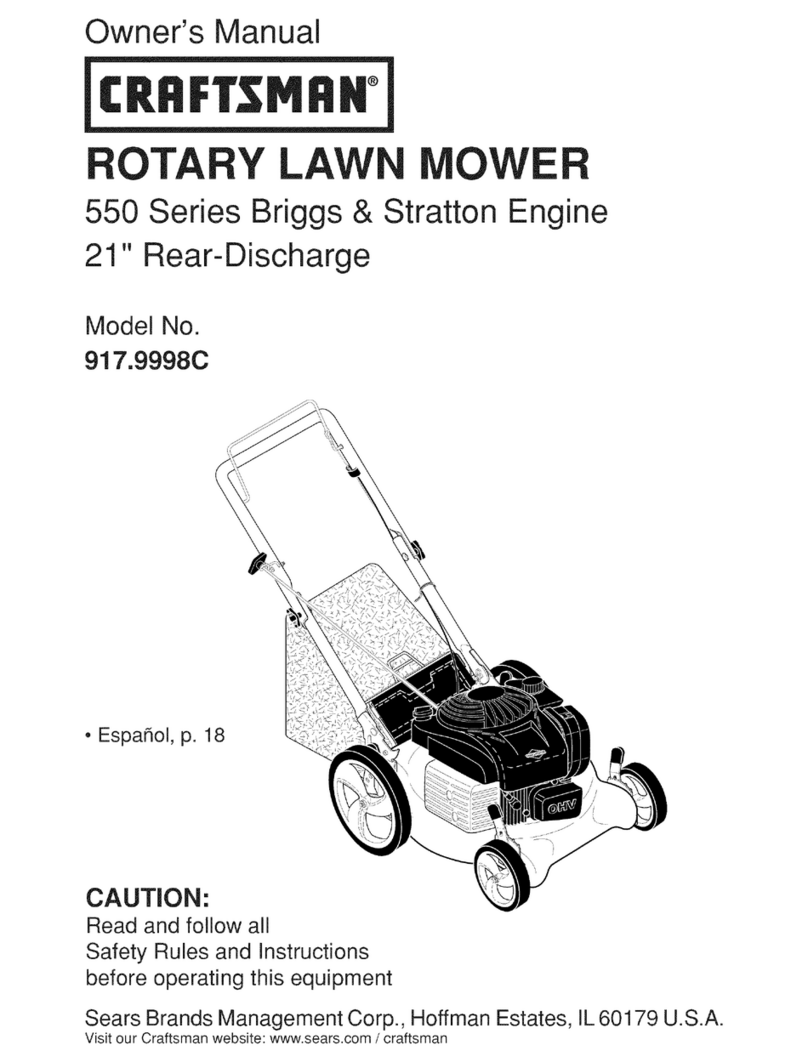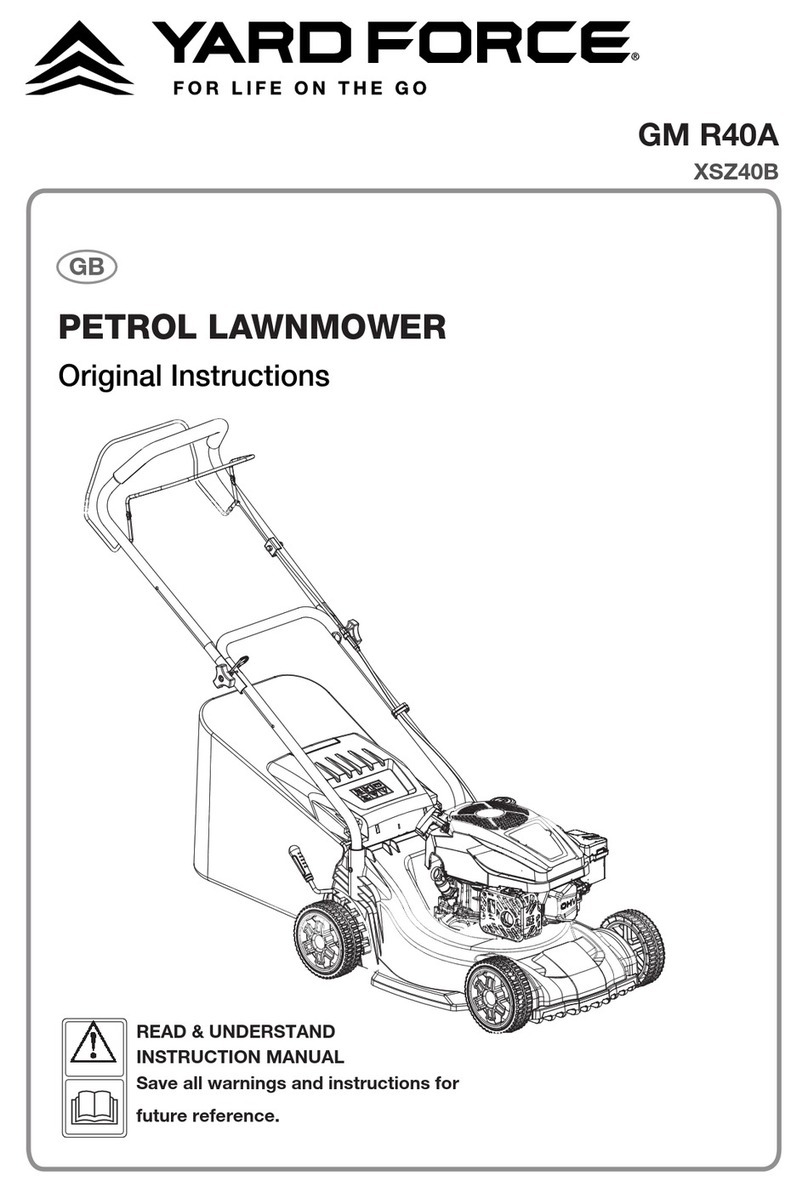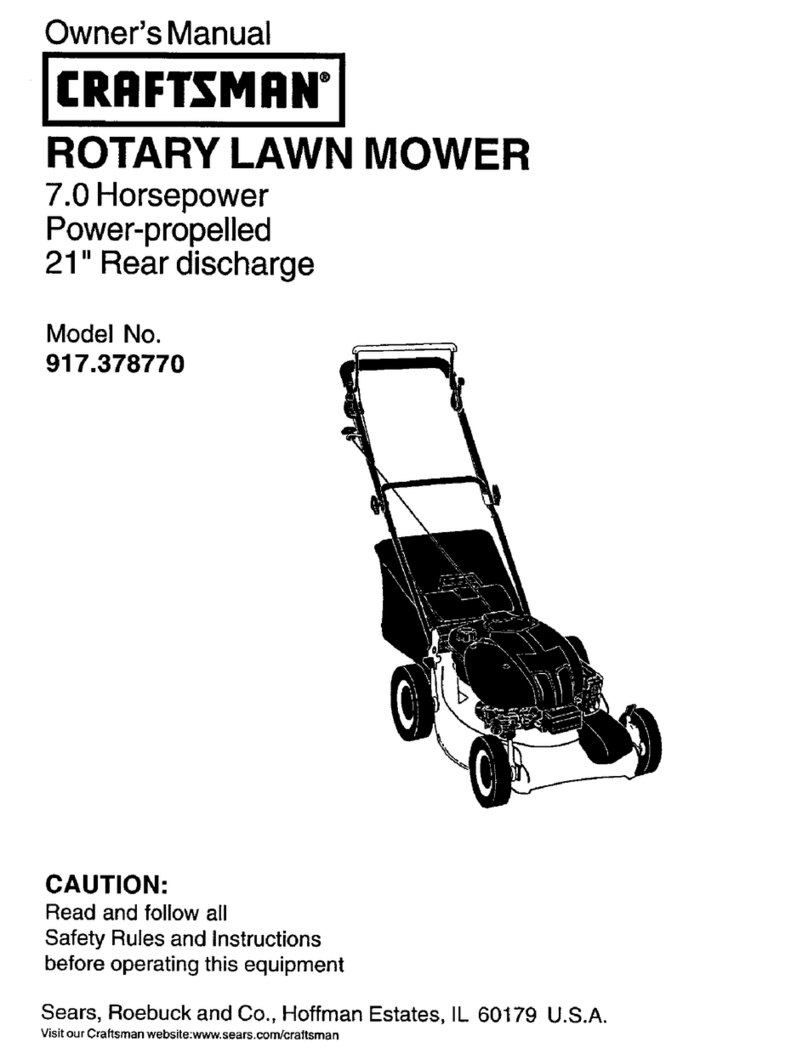
Neveroperatemachineinwetgrass.Alwaysbesure
ofyourfooting:keepafirmholdonthehandle;walk,
neverrun.
• Disengagethedrivesystem,if soequipped,before
startingtheengine(motor).
• Iftheequipmentshouldstarttovibrateabnormally,
stoptheengine(motor)andcheckimmediatelyforthe
cause.Vibrationisgenerallyawarningoftrouble.
• Alwaysweareyeprotectionwhenoperatingmachine.
• Useextracarewhenapproachingblindcorners,shrubs,
trees,orotherobjectsthatmayobscurevision.
• Whenloadingorunloadingthismachine,donotexceed
themaximumrecommendedoperationangleof15°.
• WearproperPersonalProtectiveEquipment(PPE)
whileoperatingthismachine,including(ataminimum)
sturdyfootwear,eyeprotection,andhearingprotection.
Donotmowinshortsoropentoedfootwear.
Alwaysletsomeoneknowyouareoutsidemowing.
III. SLOPE OPERATION
Slopes are a major factor related to slip & fall accidents,
which can result in severe injury. All slopes require extra
caution. If you feel uneasy on a slope, do not mow it.
DO:
• Mow across the face of slopes: never up and down.
Exercise extreme caution when changing direction on
slopes.
• Remove obstacles such as rocks, tree limbs, etc.
• Watch for holes, ruts, bumps or hidden objects. Uneven
terrain could cause a slip and fall accident. Tall grass
can hide obstacles.
DO NOT:
• Do not mow near drop-offs, ditches or embankments.
You could lose your footing or balance.
• Do not mow on wet grass or excessively steep slopes.
Poor footing could cause a slip and fall accident.
IV. SAFE HANDLING OF GASOLINE
To avoid personal injury or property damage, use extreme
care in handling gasoline. Gasoline isextremelyflammable
and the vapors are explosive.
• Extinguish all cigarettes, cigars, pipes and other sources
of ignition.
• Use only an approved container.
• Never remove gas cap or add fuel with the engine
running.
• Allow engine to cool before refueling.
o
o
Never refuel the machine indoors.
Never store the machine or fuel container where there
is an open flame, spark or pilot light such as a water
heater or on other appliances.
• Never fill containers inside a vehicle, on atruck or trailer
bed with a plastic liner. Always place containers on
the ground away from your vehicle before filling.
• Remove gas-powered equipment from the truck or
trailer and refuel it on the ground. If this is not possible,
then refuel such equipment with a portable container,
rather than from a gasoline dispenser nozzle.
• Keep the nozzle in contact with the rim of the fuel tank
or container opening at alltimes until fueling iscomplete.
Do not use a nozzle lock-open device.
• Iffuel isspilled on clothing, change clothing immediately.
• Never overfill fuel tank. Replace gas cap and tighten
securely.
V. GENERAL SERVICE
o
o
Never run a machine inside a closed area.
Never make adjustments or repairs with the engine
(motor) running. Disconnect the spark plug wire, and
keep the wire away from the plug to prevent accidental
starting.
• Keep all nuts and bolts tight to be sure the equipment
is in safe working condition.
• Never tamper with safety devices. Check their proper
operation regularly. Never do anything to interfere with
the intended function of a safety device or reduce the
protection provided by a safety device.
• Keep machine free of grass, leaves, or other debris
build-up. Clean oil or fuel spillage. Allow machine to
cool before storing.
• Stop and inspect the equipment if you strike an object.
Repair, if necessary, before restarting.
• Never attempt to make wheel height adjustments while
the engine is running.
• Grass catcher components are subject to wear, dam-
age, and deterioration, which could expose moving
parts or allow objects to be thrown. Frequently check
components and replace with manufacturer's recom-
mended parts, when necessary.
• Mower blades are sharp and can cut. Wrap the blade(s)
or wear gloves, and use extra caution when servicing
them.
• Do not changethe engine governor setting oroverspeed
the engine.
• Maintain or replace safety and instruction labels, as
necessary.
TABLE OF CONTENTS
SAFETY RULES ......................................................... 2-3
PRODUCT SPECIFICATIONS ....................................... 4
CUSTOMER RESPONSIBILITIES ................................. 4
ASSEMBLY ................................................................. 4-5
OPERATION ............................................................. 6-10
MAINTENANCE SCHEDULE ...................................... 11 3
MAINTENANCE ...................................................... 11-14
SERVICE AND ADJUSTMENTS ............................ 15-16
STORAGE ............................................................... 16o17
TROUBLESHOOTING ................................................. 18
WARRANTY ............................................................ 19-22



